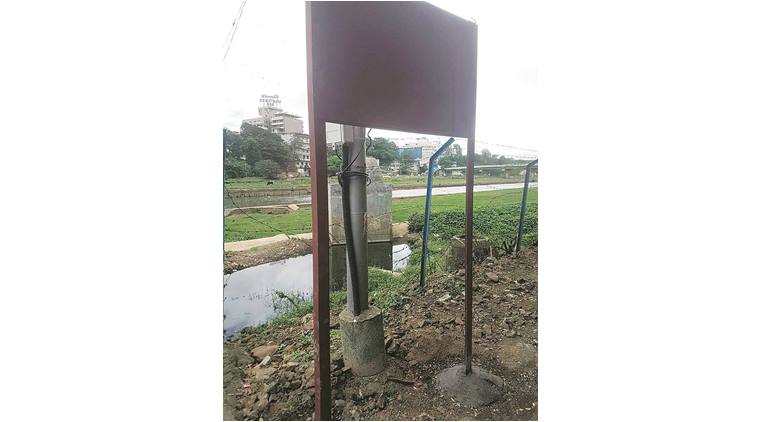Maharashtra Ganesh Utsav: This Ganpati immersion, get to know ghat names too
To educate youth, Shri Tulshibaug Ganesh Utsav Mandal takes up initiative of installing nameboards of ghats
 . Now, one of the most famous Ganesh mandals of Pune – Shri Tulshibaug Ganesh Utsav Mandal – has taken up the initiative of installing boards that carry names of the ghats.
. Now, one of the most famous Ganesh mandals of Pune – Shri Tulshibaug Ganesh Utsav Mandal – has taken up the initiative of installing boards that carry names of the ghats.
EVERY YEAR during Ganeshotsav, around 50,000 people gather on different ghats of the Mutha river for the immersion of Ganesh idol.
There are around 20 ghats in the Mutha river. However, barring a few senior citizens and historians, not many, especially youngsters, are aware of the names of the ghats.
Till date, even the Pune Municipal Corporation (PMC) hasn’t installed any boards that carry names of the ghats. Now, one of the most famous Ganesh mandals of Pune – Shri Tulshibaug Ganesh Utsav Mandal – has taken up the initiative of installing boards that carry names of the ghats, which are located along the stretch between Deccan Gymkhana and PMC bus stand. Some of the river ghats are – Panchaleshwar, Nateshwar, Amruteshwar, Omkareshwar, Mutheshwar, Narayaneshwar, Punyeshwar, Siddheshwar, Vriddheshwar and so on. Most of the ghats date back to the Peshwa era.
Nitin Pandit, who is the treasurer of Shri Tulshibaug Ganesh Utsav Mandal, said, “Pune’s Ganeshotsav is growing bigger and bigger each passing year. People from neighbouring cities and villages visit the city to participate in the festival. While those who have been staying in Pune for many years may be aware of the names of the river ghats, those who are visiting the city may not be. The younger generation is completely unaware of the river ghat names. Hence, we decided to install nameboards on the ghats on September 2.” Pandit said, every year, Tulsibaugh Ganesh Mandal immerses its idol in the Panchaleshwar Ghat, near the Lakadi Pul, and on September 2, the Panchaleshwar name board will be inaugurated by Mayor Prashant Jagtap.
City-based historian Pandurang Balkawade shares that names of all the river ghats are based on the temples by the same name. “For instance, Panchaleshwar Ghat is near Panchaleshwar Temple, and Omkareshwar Ghat near Omkareshwar Temple. While most of these ghats are from the times of the Peshwas, two ghats – Narayaneshwar Ghat and Punyeshwar Ghat- are around 700 years old and belong to the Yadava era. While Narayaneshwar and Punyeshwar temples got destroyed decades ago, and mosques and dargah came up on the site, the ghats remain as it is.”
Balkawade added that rivers were an integral part of the human civilisation in the olden days. However, with development, the scenario changed. He said, “Since water has reached every household now, people remember our rivers only during Ganpati visarjan. The initiative of putting up name boards is nice and will educate the new generation.”







